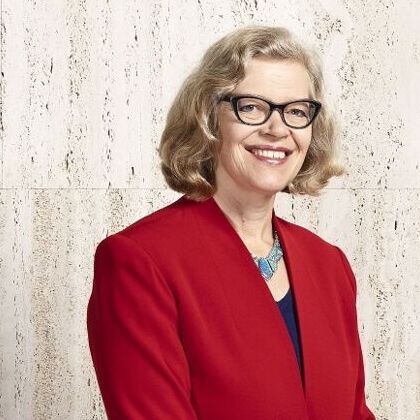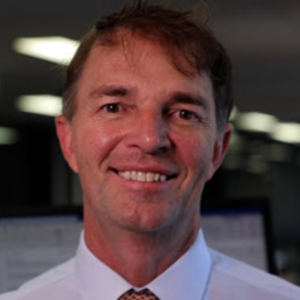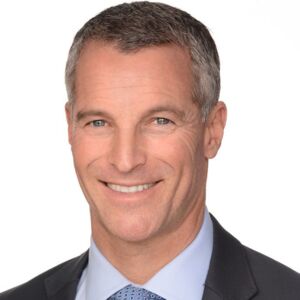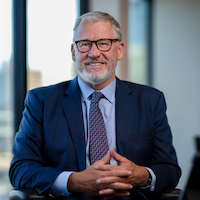Brighter Super chief gears up for another merger
By Elizabeth Fry

The $31 billion Queensland fund, which merged industry funds Energy Super and LGIAsuper last year - and then acquired Suncorp Super - has restructured its investment team to manage complex portfolios and allocate capital more effectively.
After overseeing the integration of the three funds to create Brighter Super, chief executive Kate Farrar beefed up the investment team, adding more investment risk and operations professionals.
"We have also added a lot of competencies on the performance reporting side into our investment operations team," she says.
"So overall, there has been a huge focus on our investment's ecosystem, a very big uplift in numbers, people skills and capability, which has resulted in a much better performance."
Rainmaker Information data puts the superannuation fund's default My Super product in sixth place for the year ended December 2022 with a return of 4.1 per cent.
The performance of the new fund has continued into 2023 when it posted a return of 1.4 per cent for the 12 months ended January 2023 compared to the MySuper sector median of 0.0 per cent, according to Rainmaker Information executive director Alex Dunan.
"Australian equities jumping 10 per cent in the past three months is behind the rapid recovery in MySuper returns," he notes.
Bringing together the Energy Super and LGIAsuper portfolios allowed Brighter Super to stand back and ask the question - what portfolio do we want for the future?
"We were very fortunate to have the opportunity to take advantage of rationalising our portfolios to make real changes to our strategic asset allocations and to pick our best managers'," states Farrar.
Also, the fund realised tangible benefits from the merger of the two funds.
Within 12 months, foundation members had seen up to a 29 per cent fall in fees.
That said, Farrar says the merger allowed management to genuinely improve performance through a combination of investment strategy and lower costs.
In late 2021, Brighter Super restructured its investment team so we had accountabilities at portfolio management level delivering against strategic asset allocations, and then pillars of senior asset class heads.
"We had to do that because we had two super funds (Brighter Super and Suncorp Portfolio Services) with two different portfolios, but we needed to realise the benefits of having the best people running our asset classes," she says.
"This means accountability for performance at a class level and against strategic asset allocations are very clear. This has been a fundamental reason why we've been able to improve performance. We're committed to the model and will keep it into the future."
Sizing up opportunities
Brighter Super has publicly stated a target size of around $60 billion which essentially means doing at least one more deal with a similar-sized fund.
Speaking on the merger process Farrar - who is still working through the Suncorp Super integration due for completion by the end of May 2023 - says Brighter Super has developed genuine competencies in doing mergers, both in the company and within their partners.
In her view, this sets the fund up very well for the future.
"Aside from getting the strategy right, the most important thing we have found you do need is to run the implementation under a program management office," she argues.
"Mergers are complex with a lot of interdependencies, so if you don't know what's going well and not, you can find yourself off track.
"We've implemented a PMO both for our mergers and our acquisition integration. It is definitely a feature you have to have and has set us up very well for the future."
As for hiring, Farrar says recruits are keen to be part of a fund that is growing whilst keeping a boutique
Like many of her peers, the chief executive believes that staff get a lot of exposure to many different things in a mid-sized fund which is great for someone at that middle stage of their career.
"We have been able to find people in equities, ESG, portfolio management, analytics, risk and performance reporting," she adds.
She says private equity specialists are the hardest to hire.
"Oddly, hiring for property and other real assets has been easier but private equity is a unique skill."
As she sees it, one of the positive aspects of a merger is that it forces funds to stand back, look at the portfolio from scratch and create the portfolio that is fit for purpose for now.
Farrar says the merger provided the opportunity for a wholesale review, from the investment option level, all the way down to the portfolio. For a start, Brighter Super streamlined its manager lineup.
But the merger had profound implications for the fund's asset allocation.
"Brighter Super has an allocation of more than 30 per cent to illiquid assets, which has provided outsized returns but poses the challenge of managing calls for cash. So ensuring you have a real understanding of what your future liquid asset position looks like at all points in time, lets you get ahead in ensuring you manage the placement of illiquid assets in a timely manner."
Board moves
Yet achieving the right outcome can always be subject to an unexpected hitch.
Late last year, Brighter Super's board overhauled its trust deed so that the Electrical Trade Union lost nomination rights for a board position after the union made "non-negotiable demands" on the fund.
The superannuation fund subsequently welcomed energy industry veteran Peter Scott to the board as the member representative.
In recent months, the ETU has publicly slammed Farrar and encouraged members to switch funds over her comments that there should be a "reasonable discussion" on small modular nuclear power's role in decarbonisation.
"I was speaking at an event and it happened to be when the development of the first modular nuclear reactor was approved in the US, and I said perhaps it's time for us to reconsider some conversation about that. That was the extent of it."
At the time Farrar said they did not have any plans to invest in nuclear power generation," adding that the fund had not even researched nuclear power as a possibility.
"Fundamentally, the board went through a process that sought for a long time to find a good working relationship with the ETU, but you know, we were unable to do so,' she argues.
"Merger transactions are necessary for the superannuation industry today, but they cannot get done without the support of boards on both sides and good relationships between board members on both sides.
"In our transactions, we had board members who had the best interests of members at the heart of their decision-making, which made the process a pleasure."



